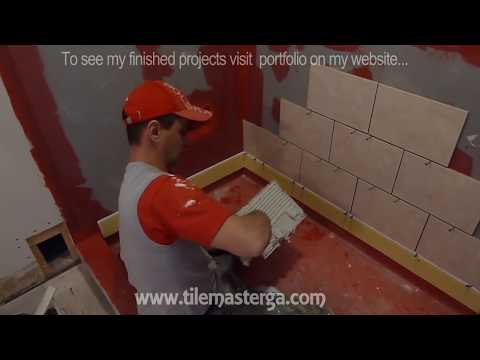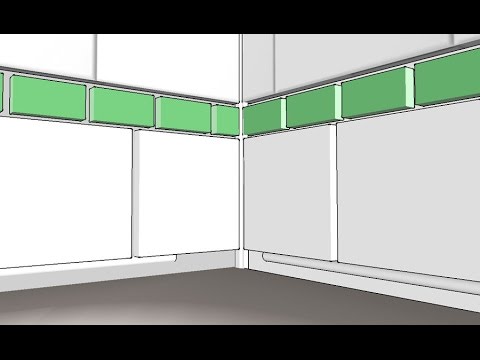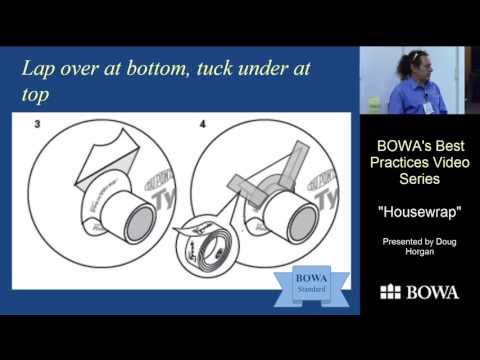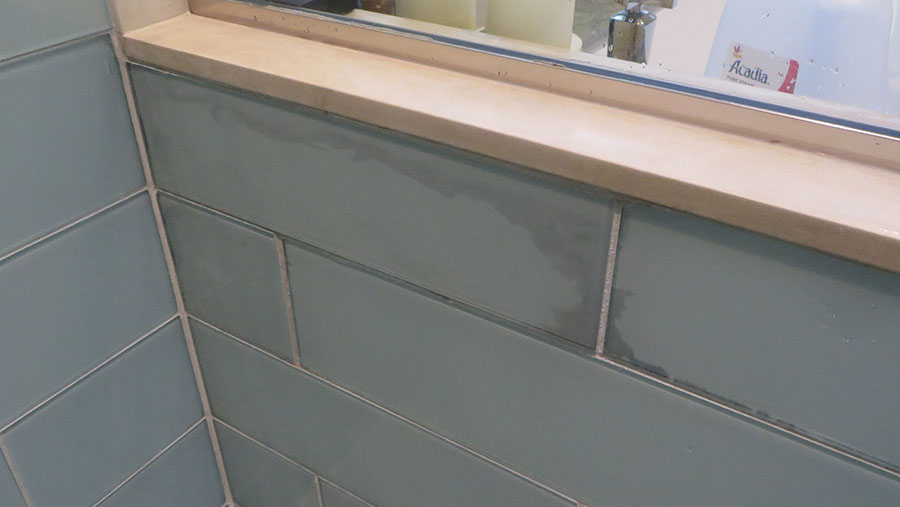It's waterproofing time
"This is the most important part to waterproof because this is the place where all the water will end up and it might leak if not done correctly."
Editor's Note:
Before we deleted the comments section on our website, a lot of folks applaud Michal's niche waterproofing and vigorously question his use of drywall in a shower. It is not drywall, it is DensShield, a tile backer board made specifically for wet room applications, like showers. You can watch videos of Michal installing the DensShield here.
Shampoo niches are like windows: three-dimensional holes in walls that make water leaks much more difficult to stop. In the case of shampoo niches, there are some great fluid-applied waterproofing membranes available. Michal likes Laticrete over RedGuard because it has a more buttery texture and can be applied with a trowel.
He also stresses the importance of using the right tape. Mesh tape for drywall has large square holes in it, which are too big for the membrane to span with and seal.
"Sometimes you will see contractors applying RedGuard or this membrane (Laticrete) without any tape ...
Uh, just so you know, this membrane without a tape—eventually wider joints will crack. So the fiberglass tape is a must."
Step by step:
- Use fiberglass tape, not drywall mesh tape. Fiberglass tape is for waterproofing. It will combine with the waterproofing membrane to form a shield against water.
- Precut the pieces of tape to wrap the walls, corners, bottom and top, and any other seams. Keep them handy, neatly laid on the floor.
- 1 Bottom—cut about 2 inches wider than the bottom shelf.
- 2 inside corner butterfly patches—cut about 1-1/2 inches square.
- 4 transition strips to fold inside the corners (top and bottom) of the sides—cut in squares, the width of the sides.
- 2 sides—cut about 2 inches wider than the side.
- 1 top—cut about 2 inches wider than the top.
- Apply membrane with a six-inch putty knife to the bottom of the niche, working the membrane into all the seams with the putty knife.
- Apply membrane to the outside corners of the niche as well, working the membrane into the seams in the backer board.
- Place the fiberglass tape with your hands and then apply membrane over it.
- Start with the bottom. Michal makes a fold about an inch from one edge and uses it to form a clean crease along the front edge of the niche. The tape also folds up the back.
- Apply butterfly patches to the corners These will overlap the floor and underlap the wall pieces.
- A corner piece (cut to the width of the shelf) goes on top of the butterfly corner and is repeated on the other side.
- The same process holds for the vertical corners in the back of the niche: Fold the long pieces into a Z-shape to wrap the outside and inside corners in a single strip.
- Apply membrane over the tape, smoothing out any air bubbles.
- The top piece of tape goes in last, again, folding up over the outside corner and down over the inside corner. The waterproofing membrane is added over the tape.
- Also, apply membrane over any uncovered backer board and screw heads.
Now, let it dry and it's ready to be tiled.
"And it won't leak—if you do it correctly."
—Michal Mroczko is a tile contractor in Atlanta, GA who focuses on specialty bathrooms renovations. His YouTube channel has many good videos.











